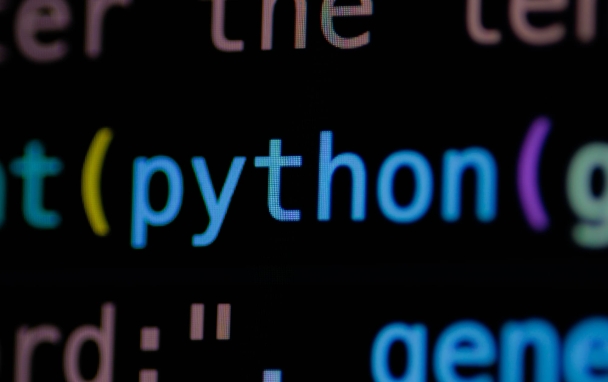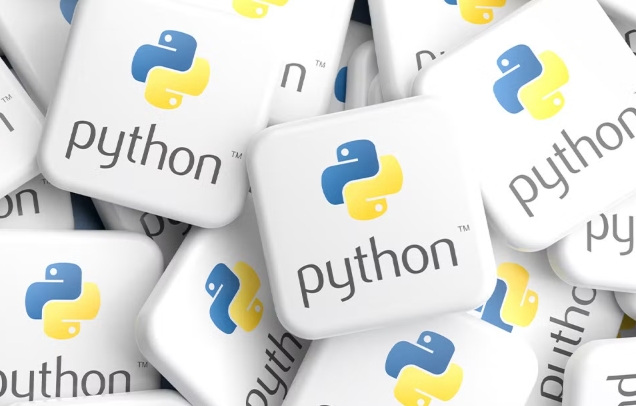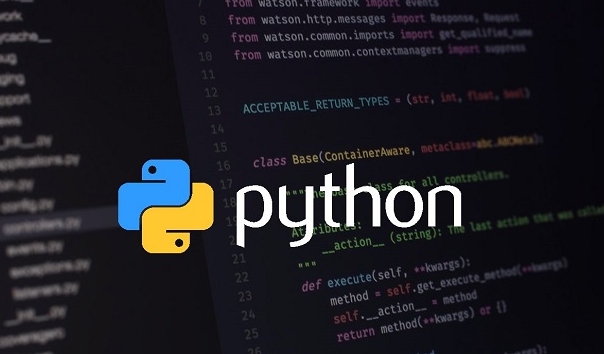To define a Python class, you need to understand the structure and purpose, use the class keyword followed by the class name and colon, and use indentation to write attributes and methods internally. Class names use the big camel nomenclature, and attributes and methods encapsulate data and operations in the class. 1. Pass placeholder is available when defining an empty class; 2. The initialization attribute is implemented through the __init__ method, and the first parameter must be self; 3. The method definition needs to start with self, and the object itself is automatically passed on when called; 4. The inheritance of the class specifies the parent class in the parent class brackets, and uses super() to call the parent class initialization logic.

It is actually not difficult to define a Python class. The key is to understand the basic structure and purpose of the class. Classes are the core of object-oriented programming, which allows you to encapsulate data (properties) and methods of manipulating this data.

Basic syntax: Use class keywords
The most basic way to define a class in Python is to use the class keyword, followed by the class name, then write a colon, and then indent the internal content of the writing class:

class Person:
pass This example defines a class called Person , which does nothing in it, just uses pass to occupy the place. You can add properties and methods to this class.
Note:

- Class names usually use the CamelCase method, such as
StudentProfile - The function in the class is called a "method", and the first parameter must be
self, indicating the object itself
Initialize properties: Use the __init__ method
If you want each instance of a class to have an initial property value, you need to define the __init__ method. It is automatically called when the object is created.
class Person:
def __init__(self, name, age):
self.name = name
self.age = age In this way, every time you create Person object, you need to pass in name and age :
p1 = Person("Alice", 30)Frequently Asked Questions:
- Forgot to add
selfparameter will cause an error - The attribute name can be taken arbitrarily, but it is recommended to be consistent with the incoming parameters to avoid confusion.
Add method: Let the object do things
In addition to storing data, classes can also define methods to implement functions. For example, we can add a way to say hello to Person :
class Person:
def __init__(self, name, age):
self.name = name
self.age = age
def greet(self):
print(f"Hello, my name is {self.name} and I am {self.age} years old.")Call method:
p1 = Person("Bob", 25)
p1.greet()A few suggestions:
- Method names are generally used in lowercase letters, and multiple words are separated by underscores.
- Methods can be separated by blank lines to improve readability
- Other methods can be called in the method to form a logical combination
Inheriting existing classes: a way to reuse code
If you want to define a new class, which is similar to an existing class, with some extensions or modifications, you can use inheritance:
class Student(Person):
def __init__(self, name, age, student_id):
super().__init__(name, age)
self.student_id = student_id The above code defines the Student class, which is a subclass of Person , inherits name and age attributes, and adds student_id .
Several key points:
- Use
super()to call the initialization method of the parent class - Subclasses can override methods of parent classes
- Inheritance helps organize code structures and reduce duplication
Basically that's it. Defining classes seems simple, but it still requires more practice to use them flexibly in actual projects, especially to understand the relationship between self , inheritance and methods.
The above is the detailed content of How to define a python class. For more information, please follow other related articles on the PHP Chinese website!

Hot AI Tools

Undress AI Tool
Undress images for free

Undresser.AI Undress
AI-powered app for creating realistic nude photos

AI Clothes Remover
Online AI tool for removing clothes from photos.

Clothoff.io
AI clothes remover

Video Face Swap
Swap faces in any video effortlessly with our completely free AI face swap tool!

Hot Article

Hot Tools

Notepad++7.3.1
Easy-to-use and free code editor

SublimeText3 Chinese version
Chinese version, very easy to use

Zend Studio 13.0.1
Powerful PHP integrated development environment

Dreamweaver CS6
Visual web development tools

SublimeText3 Mac version
God-level code editing software (SublimeText3)

Hot Topics
 Java error: Duplicate class definition, how to fix it
Jun 25, 2023 pm 01:51 PM
Java error: Duplicate class definition, how to fix it
Jun 25, 2023 pm 01:51 PM
Java is one of the most widely used programming languages ??in the world, and many developers will encounter some common mistakes in Java development. One of the more common types of errors is the "duplicate class definition" error. This article will explain why this error occurs and how to resolve it. Cause of the error First, let’s understand what the “duplicate class definition” error is. In Java, each class must have a unique name, otherwise the compiler cannot distinguish them. If two classes with the same name are defined in the same package, or in different packages
 My Python class defines the __del__ method, but it is not called when I delete the object
Sep 24, 2023 pm 11:21 PM
My Python class defines the __del__ method, but it is not called when I delete the object
Sep 24, 2023 pm 11:21 PM
__del__ is a magic method in Python. These magical methods allow us to implement some very neat tricks in object-oriented programming. They are also called Dunder methods. These methods are identified by two underscores (__) used as prefix and suffix. In Python, we create an object using __new__() and initialize it using __init__(). However, to destroy an object we have __del__(). Example Let's create and delete an object - classDemo:def__init__(self):print("Wearecreatinganobject.");#d
 How to create a list of objects in a Python class
Aug 19, 2023 pm 06:33 PM
How to create a list of objects in a Python class
Aug 19, 2023 pm 06:33 PM
Python is a dynamic and technically proficient programming language that supports object-oriented programming (OOP). At the core of OOP is the concept of objects, which are instances of classes. In Python, classes serve as blueprints for creating objects with specific properties and methods. A common use case in OOP is to create a list of objects, where each object represents a unique instance of a class. In this article, we will discuss the process of creating a list of objects in a Python class. We'll discuss the basic steps involved, including defining a class, creating objects of that class, adding them to a list, and performing various operations on the objects in the list. To provide clear understanding, we will also provide examples and outputs to illustrate the concepts discussed. So, let’s dive into
 How to solve PHP error: Class definition not found?
Aug 19, 2023 pm 06:21 PM
How to solve PHP error: Class definition not found?
Aug 19, 2023 pm 06:21 PM
How to solve PHP error: Class definition not found? In PHP development, sometimes we encounter error messages similar to "Class definition not found". This error usually occurs when we call a class, but PHP cannot find the definition of the class. This article will introduce some common causes and solutions to help you solve this problem. Common causes and solutions: Wrong class file path: This is one of the most common reasons. When we use a certain class, PHP cannot find the definition of the class. This is usually because the path of the class file is set.
 C++ syntax error: functions cannot be included in class definitions, how to deal with it?
Aug 21, 2023 pm 10:16 PM
C++ syntax error: functions cannot be included in class definitions, how to deal with it?
Aug 21, 2023 pm 10:16 PM
C++ is an object-oriented programming language, and the definition of classes is one of its core concepts. When writing classes, we often encounter some syntax errors, including errors that functions cannot be included in class definitions. So how do we deal with this syntax error? Reason Analysis In the C++ language, a class definition can only contain member variables and member functions, and functions cannot be defined directly in the class definition. This is because the functions defined in the class definition are member functions and must be called through an instance of the class. The function defined in the class definition cannot determine the instance to which the function belongs.
 What is the role of the __slots__ attribute in Python classes, and how can it optimize memory usage?
Jun 13, 2025 am 12:23 AM
What is the role of the __slots__ attribute in Python classes, and how can it optimize memory usage?
Jun 13, 2025 am 12:23 AM
In Python, __slots__ improves performance by limiting instance properties and optimizing memory usage. It prevents the creation of dynamic dictionary __dict__, and uses a more compact memory structure to store properties, reduces the memory overhead of a large number of instances, and speeds up the access of attributes. It is suitable for scenarios where a large number of objects, known attributes and needs to be encapsulated. However, its limitations include the inability to dynamically add properties (unless explicitly include __dict__), multiple inheritance complexity, and debugging difficulties, so it should be used when paying attention to performance and memory efficiency.
 What are attributes and methods in Python classes?
Jun 24, 2025 am 12:19 AM
What are attributes and methods in Python classes?
Jun 24, 2025 am 12:19 AM
In Python, class attributes and instance attributes are used to store data related to a class or instance, while methods define the behavior of an object. ① Class attributes are shared by all instances, such as species; ② Instance attributes are specific to each object, such as name; ③ Methods are functions defined in the class, and use self to access instance data, such as bark(); ④ Class methods (@classmethod) and static methods (@staticmethod) provide flexible access to classes or instances; ⑤ Attributes and methods usually work together, such as using class attribute count to track the number of instances and output through class method total_dogs(). This structure makes object-oriented programming more organized and maintainable.
 How to pass arguments to python class `__init__`
Jul 04, 2025 am 03:27 AM
How to pass arguments to python class `__init__`
Jul 04, 2025 am 03:27 AM
In Python, passing parameters to the init method of a class can be achieved by defining positional parameters, keyword parameters and default values. The specific steps are as follows: 1. Declare the required parameters in the init method when defining the class; 2. Pass parameters in order or using keywords when creating an instance; 3. Set default values ??for optional parameters, and the default parameters must be after non-default parameters; 4. Use args and *kwargs to handle uncertain number of parameters; 5. Add parameter verification logic to init to enhance robustness. For example classCar:definit__(self,brand,color="White"):self.brand=brandself.c






